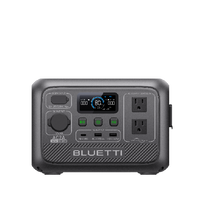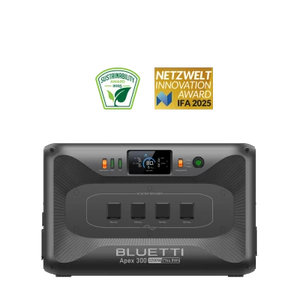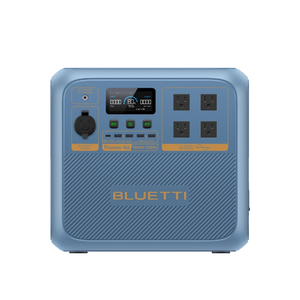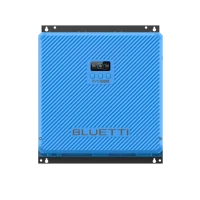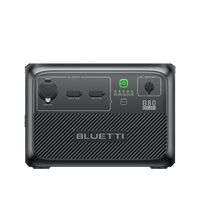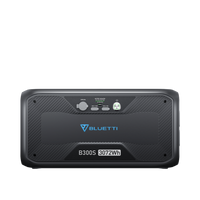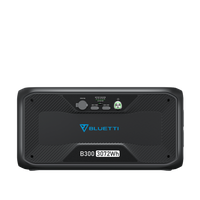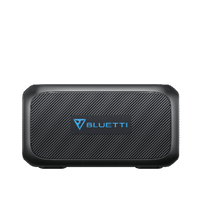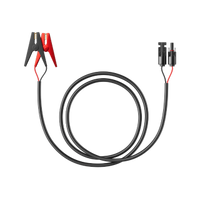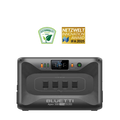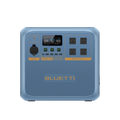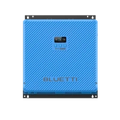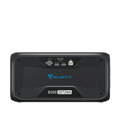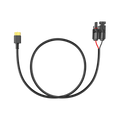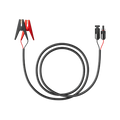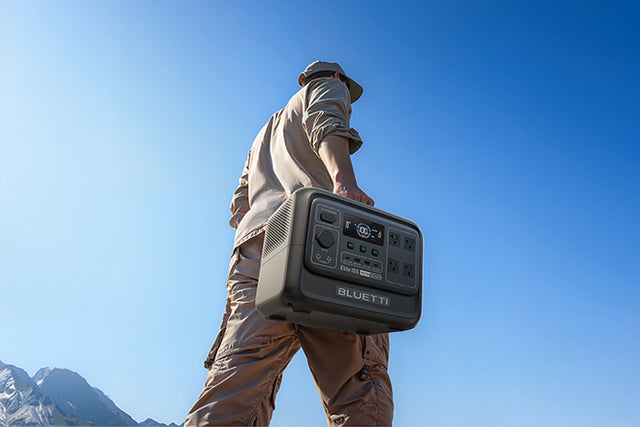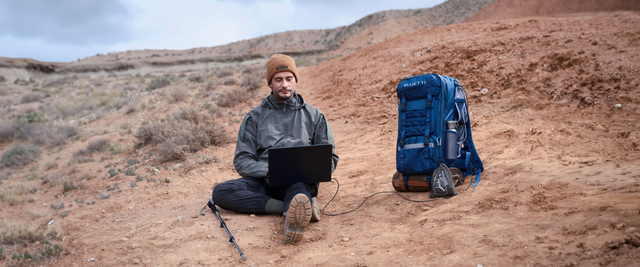Your cart is empty
Shop our productsWhat’s the major drawback of solar power? You would most probably say the unavailability of the sun during night or a cloudy day. Agreed, and the only way to overcome this drawback is having solar batteries. They’re the key to your energy independence and critical to fully benefit from solar energy. The energy you produce during the day is stored in these batteries for later use. In case your batteries are inefficient, you’re more likely to struggle with power shortage.
Sounds terrible? Most people using solar kits are actually falling short of power due to inefficient batteries. It’s not that the battery capacity is insufficient; instead, the battery efficiency decreases over time. Among other factors, the major issue is with the consumer’s choice of technology, brand, and usage patterns. This blog helps you select the best solar batteries for your home. So that you can stay worry-free and enjoy energy independence!
How Solar Batteries Work

Solar batteries are similar to water tanks in your home. You fill them up and use the water whenever needed. Similarly, you charge the batteries and use the stored electricity when needed. Their function is no more than energy storage. Let’s see how batteries work with solar panels;
Connection to Solar Panels
The batteries are connected to solar panels via an inverter. It acts as an intermediary to direct solar energy to charge batteries and fulfill home power needs simultaneously. However, the primary function of an inverter is to convert DC power to AC power and vice-versa. The inverter can also charge the batteries with grid supply, in case solar energy is unavailable.
Solar Batteries Charging
Solar batteries charge on 12-volts DC power. Your solar panels produce the same which flows through the inverter to batteries. The power storage mechanism varies with the battery technology, but the core principle is similar. The energy is stored as chemical potential during charging. When power is needed, the charging process is reversed (discharging). At core, it's the flow of ions (positive and negative charges) which create current.
Solar Batteries Consumption
Once charged, the solar batteries can power your house. The inverter collects power from batteries, through a discharging mechanism, and transfers the power to your home. The inverter converts DC power to AC power in the process. Most appliances, electrical installations, and devices run on AC power. The battery capacity is measured in ampere-hours, representing the amount of current discharged in time (hours).
Solar Batteries Recharging
Solar batteries are rechargeable just like your smartphone battery. You can recharge batteries with solar power or grid supply through an inverter. However, they have fixed cycles for charging and discharging. The battery efficiency declines once the cycles are exceeded. Some inverters also support multi-recharge facilities, allowing you to recharge from other accessible power sources like generators, cars, etc.
Types of Solar Batteries
Solar battery technology is evolving every then and now. The advancement has increased the usability of solar kits. You can expect up to 90% efficiency from batteries. There’s a range of battery types available in the market. We’ll explore batteries that are most compatible to use with solar kits.
Lithium-ion Batteries
Lithium-ion batteries are most popular to use with solar kits. They are known for their efficiency, longevity, and safety. Previously, lithium-ion batteries were not preferred due to fire and explosion hazards, but the technology has improved a lot, making them one of the best options. They provide higher discharge depth, taking efficiency to 90%, without needing any maintenance.
You can find nickel-manganese-cobalt, lithium polymer and lithium iron phosphate batteries on the market. They’re more or less the same, but their efficiencies vary. Lithium-ion batteries also have some demerits, like high costs and temperature sensitivity. You may require to maintain the temperature at recommended levels.
Lead-acid Batteries
Lead-acid batteries have been in the market for decades. The lead-acid battery technology has matured, it has now become a cost-effective battery solution. However, lead-acid batteries lack in terms of efficiency and durability. They are not long-lasting compared to other advanced battery types. There's a continuous need of maintenance for optimal use. It’s the reason people are not preferring lead-acid batteries anymore.
If you’re looking for a budget-friendly solution, lead-acid batteries are a good option. It’s recommended to go for sealed lead-acid batteries, they’re a better version with high durability and longevity. You can upkeep the batteries with a strict maintenance schedule.
Nickel-cadmium batteries
Nickel-cadmium batteries are getting increasingly popular for solar kits. They are efficient with high depth of discharge and less temperature sensitivity. Moreover, the nickel-cadmium batteries are not recommended for residential use. The cadmium is a toxic element and poses serious health hazards if mishandled.
The nickel-cadmium batteries are competitively expensive. The costs are justifiable with durability and efficiency. These batteries are best for commercial use, especially in industrial environments where temperature is usually high.
Factors Affecting Solar Batteries’ Costs
Batteries make up the biggest portion of overall solar costs. There are numerous factors contributing to these costs. Some are significant and some are not. Let’s see how you can save on battery expenses when choosing solar batteries.
Battery Capacity
The battery capacity you require determines the number of batteries needed. More the batteries, the more the costs. Some people calculate their required battery capacity on their own while others rely on solar system installers. It’s not necessary that you must have enough capacity to power all your house. You may go with limited capacity to fulfill basic power needs. It depends on what you expect from a solar system.
Keeping a limited capacity can save you costs as it reduces the number of batteries. But you’ll have to manage consumption to avoid power shortage. If you’ve limited capacity, and you increase the load with one additional light bulb, you'll be left with no power. Therefore, it’s not recommended to limit battery capacity. Many people still do it for cost-savings, and the battery level monitoring through smart mobile applications makes it more convenient.
Battery Type & Features
We’ve discussed multiple battery types in the previous section, each has different features and efficiency levels. The costs vary with what you get in both these terms. High efficiency batteries with no maintenance tend to be costly. You can take example of nickel-cadmium and lithium-ion batteries, they offer up to 90% efficiency, high durability, and low maintenance. All these features add up to the costs.
The cheaper option can be lead-acid batteries which are less durable and require maintenance. You will have to check water levels, maintain temperature, etc. There are ways to save money and get an efficient battery at the same time. For instance, lead-acid batteries have a better version called sealed lead-acid batteries, they’re much more reliable, and available at fraction of costs of other battery types. But the trade-offs will still be there.
Installation Costs
Although battery installation costs are minimal, they can still have an impact. A large number of batteries will need more space, you may have to install racks or make other arrangements which increases labor costs. Usually, solar installers don’t charge extra for battery installations, they just give you total installation costs. It further depends on the time of battery installation whether it’s with the solar unit installation or after you’ve installed the system.
You can save battery installations by doing it yourself. If you have a pre-installed solar system, the battery addition is not rocket science. You can check on the internet or take the expert’s help online. It’ll save you costs and keep you from the hassle. In case you think it’s beyond your expertise, don’t try!
Choose the Best Solar Batteries for Home
We’ve filled you with information about solar battery types and the factors that drive costs. Here are some additional things you should consider when selecting solar batteries for home:
Battery Capacity
The battery you’re choosing should have enough capacity to meet your power needs. The battery capacity is measured in ampere-hours. You can calculate required ampere-hours based on your daily energy consumption in kilo-watt-hours kWh.
Battery Efficiency
The product specifications mentions the battery efficiency in percentage. The more will be the better. Other factors like number of cycles and depth of discharge also determine the battery efficiency.
Battery Warranty
Batteries come with warranty from the manufacturer. A ten year warranty will imply that the manufacturer is confident about his product. You can keep the warranty as a critical factor when selecting batteries.
You can go for BLUETTI solar batteries on our recommendation. BLUETTI is a leading manufacturer of advanced solar technology including solar panel, battery packs, power stations, etc. Its products stand out with superior quality, top-notch technology, and best prices.
BLUETTI EP900 + B500 Home Battery Backup
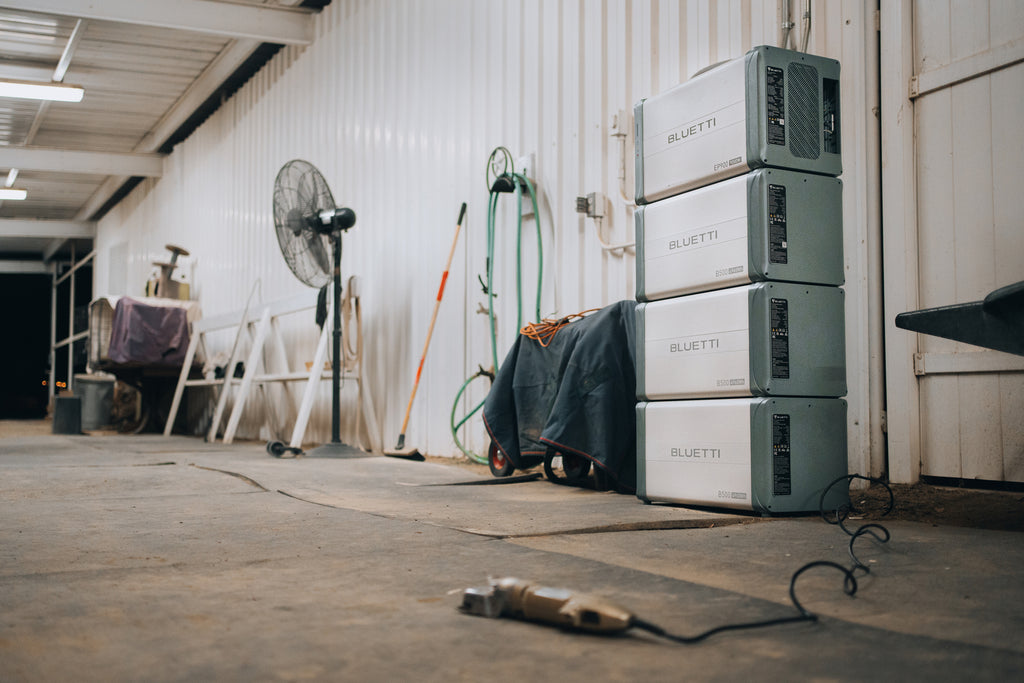
BLUETTI EP900 + B500 Home Battery Backup is the best power solution for homes. It has an expandable capacity of 9,920Wh to 19,840Wh. You can shift your entire house load to the battery backup without a worry.
The advanced lithium-ion iron phosphate batteries can take up the load efficiently. The system comes as a 360-degree solution with multi-recharge facility for use with solar power and grid supply. It comes with Wifi and bluetooth connectivity for smart monitoring and control.
The sleek design saves you space and IP65 rating allows outdoor use. It’s compatible for use with the existing solar system. The installation and connectivity is seamless. You would not require additional fittings. The BLUETTI 10-year warranty comes in handy with the product.
BLUETTI EP500Pro Solar Power Station

Take energy independence to the next level with BLUETTI EP500Pro Solar Power Station. It has a 5120Wh capacity to cater to your power needs. The design is portable with a wheelbase for indoor and outdoor use. You can control the system over WiFi through the BLUETTI user interactive mobile application. The system can run in EPS mode for uninterruptible power supply.
The BLUETTI EP500Pro Solar Power Station has advanced LiFePO4 battery packs. You can recharge it using solar and grid supply. The BLUETTI PV420 Solar Panels are best suited for this powerstation. They have a foldable design and ETFE protection for outdoor use. The solar panel efficiency is higher than that of competitor options. The panels are designed to support fast-recharging.
Final Thoughts
We’ve covered every aspect of solar batteries to help you make a sound purchase decision. What are you waiting for then? Go for a market hunt to choose the best solar battery for your home. You may select the battery type that best suits your needs. Consider our tips on saving extra and making your transition to solar energy less costly. Signing off!
Shop products from this article
Be the First to Know
You May Also Like

What Does a 30% Federal Solar Tax Credit Mean and How to Apply?
Governments around the world are offering programs that encourage homeowners to switch to solar energy. Among the most notable programs is the 30% Federal Solar Tax Credit. It reduces your...

Deadly Flooding Devastates U.S. South and Midwest — What You Need to Know





